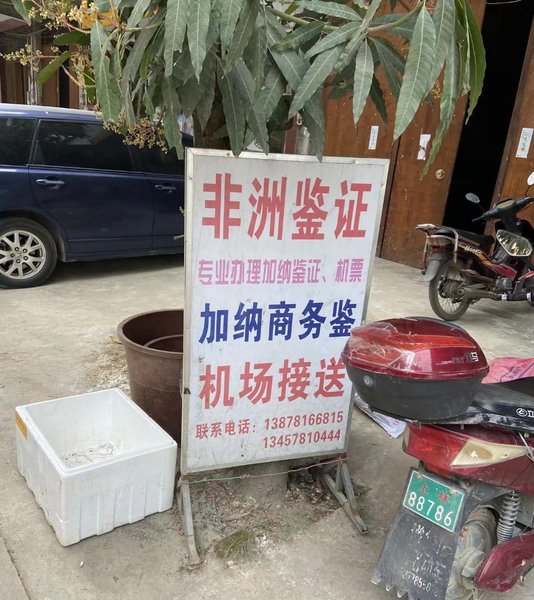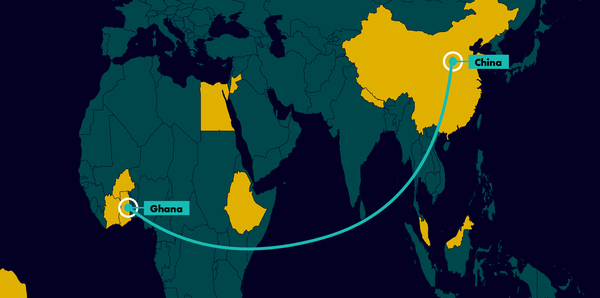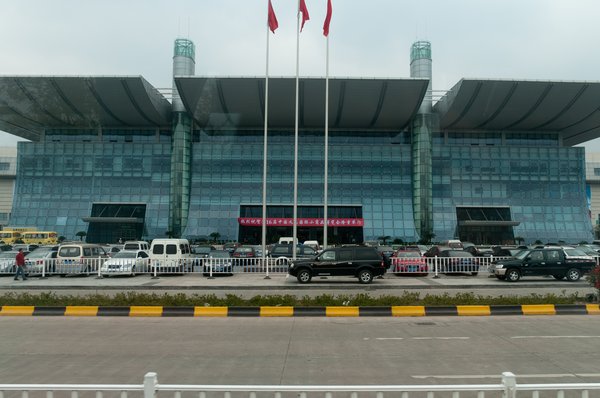
Ancestral temple of local villagers in Meizhuang. Photo via Yuheng Zou. CC BY-NC 4.0.
This blog was written by Yuheng Zou, postgraduate student of the College of Humanities and Development Studies, China Agricultural University.
At the Reception Commemorating the 20th Anniversary of the Forum on China-Africa Cooperation (FOCAC), Wang Yi, the State Councilor and Minister of Foreign Affairs said: “Over the past 20 years, FOCAC has come a long way in boosting common development of China and Africa. In 2019, trade between China and Africa hit US$208.7 billion, and total Chinese FDI in Africa reached US$49.1 billion, grown by 20-fold and 100-fold respectively compared with 20 years ago.” China has provided about 120,000 government scholarships to African countries and co-established 105 Confucius Institutes/Classrooms in 46 African countries. A total of 21,000 medical teams have been sent to 48 African countries treating about 220 million African patients. China-Africa cooperation has brought significant changes to Africa's economic and cultural development. Hidden under the huge numbers, however, are questions about the flow of economic and cultural resources between China and Africa.
Shanglin, a county located in the northeastern region of Nanning City, Guangxi Province, an automatous region in China. China, Shanglin was officially recognised as the "Hometown of Longevity in China" by China Association of Gerontology and Geriatrics in 2012. As a multi-ethnic county with a population of less than 500,000 dominated by the Zhuang people, Shanglin is rich in mineral, animal and plant resources. It is also rich in ethnic cultural resources, such as Zhuang folk songs and dances, Longmu Festival, temple fairs and so on. Since the Tang Dynasty, when Shanglin County got its name, there has been an important history of gold mining. Liu Yuxi, a famous poet of the Tang Dynasty, used his poems to describe the grand occasion of gold mining, which has become part of the historical and cultural memory of Shanglin County. Shanglin is only one of 2,843 counties in China, but from the history and practice of Shanglin gold miners, one can observe a particular flow of economic and cultural resources between China and Africa.
The flow of cultural resources brought by Shanglin gold miners
According to the official data of Shanglin County, local people started to go to African countries for gold mining in 2006, reaching a peak in 2013 with migrants in 11 countries. Among them, 12,000 people mined gold in Ghana. In 2018, 1,700 people went abroad for gold mining but this official statistic does not capture the total number of migrants.
The various activities of the Shanglin gold miners in Ghana, and more broadly the African continent, have become an important lens to analyse the flow of economic and cultural resources between China and Africa.
As a matter of fact, as Shanglin gold miners have travelled to countries outside of Ghana. They have experienced local customs from various African countries, while also spreading their distinctive ethnic culture of Guangxi. A typical example is the language exchange. Through our research for MIDEQ, our team learned that many Ghanaians began to learn to speak "Zhuang languages" and Mandarin, and some Chinese can speak "Ghanaian languages" fluently. Not only that, the Shanglin gold miners master the advanced gold mining technology, as well as the mechanical maintenance technology. With the Shanglin migrant workers now working and living across Africa, mining knowledge gradually spreads to the local communities.
Economic flows between China and Africa indirectly help preserve traditional culture in local villages. For example, Meizhuang is a village in Shanglin County, with a history that goes back 309 years as well as 87 buildings from the Ming and Qing dynasties. Our interviews with the local villagers highlighted that Shanglin gold miners in Africa are very enthusiastic in the construction of public facilities in the village. They not only inherit and maintain traditional ancient village architecture and local culture, but also build rest places and basketball courts, sponsor prizes for basketball matches, and add new vitality to rural culture and entertainment. In Meizhuang, with the support of migrant gold miners, traditional culture and modern life are integrated.
The flow of economic resources brought by Shanglin gold miners
Since 2006, when Shanglin migrants first set foot in Ghanaian cities like Kumasi, Dunkwa and Tarkwa, these cities have undergone tremendous changes. Chinese restaurants, hotels, supermarkets, and processing plants have been on the rise. It is reported that Shanglin migrants have invested tens of billions of CNY directly in Ghana, attracting hundreds of billions of yuan of domestic investment, driving the rapid development of the local economy. Increased people-to-people exchanges have also encouraged cooperation at the official level. As early as 22 October 2015, Minister of Land and Resources of Ghana and other officials came to Beijing to sign cooperation agreements with Minister of Land and Resources of China Jiang Daming in the field of geology and mining.
In the past two decades, the Ghanaian economy has grown sevenfold, but Ghana's agriculture is still underdeveloped. Shu Zhaoyun, a Shanglin gold miner, who has been working in Ghana for 26 years, brought the agriculture practices of Guangxi to Ghana and carried out large-scale planting and breeding. This has not only promoted the local economic development, but also brought wealth to the people of his hometown. It is reported that Shu Zhaoyun contracted hundreds of hectares of land in Ghana to build an agricultural base and tried to plant fruits and vegetables of Guangxi. In 2016, Shu Zhaoyun invited two Ghanaian businessmen to visit sugar mills and starch mills in Guangxi. The author also learned that a boss in Fujian province, after a failed gold mining operation in Ghana, turned to farming and invested tens of millions of yuan in tilapia (fish) farming. According to the statistics of the Embassy of the Republic of Ghana, China imported about 29 million US dollars of agricultural products from Ghana in 2019, and by September 2020, China's total planned investment in Ghana's agriculture is about 200 million US dollars. In the past, Ghanaians relied solely on imports from Western countries for their daily consumer goods. Now, this pattern has changed, and Chinese-made products have increased the choices of local people. The cooperation in agricultural processing between China and Ghana is in line with Ghana's development needs to increase the added value of agricultural products.
After 2013, the Shanglin gold miners began to work in other industries in Ghana, such as the service, retail and processing industries. Now, many Shanglin migrants have settled down in Ghana, married local women, bought land, built houses, and set up companies. It is increasingly clear that the activities of gold miners in Africa have gradually begun to go beyond the original gold mining industry, but spread to other fields, which also means that the economic and cultural flows of both sides can be more fully and more diversified. Overall, behind the vast resources flow of economy and culture between China and Africa, Shanglin gold miners play the roles of both participants and contributors.



